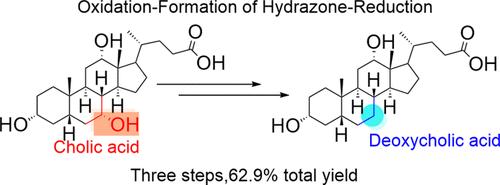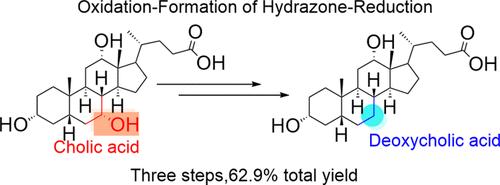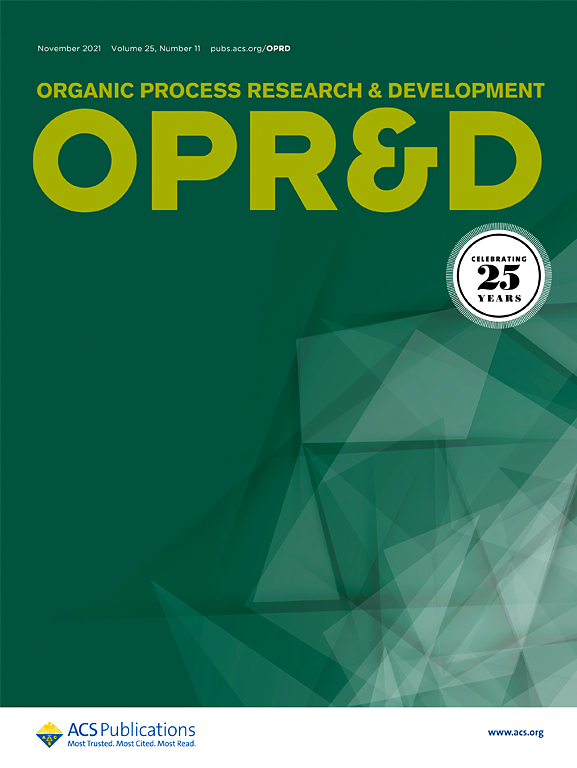以胆酸为原料新颖便捷地合成脱氧胆酸
IF 3.5
3区 化学
Q2 CHEMISTRY, APPLIED
引用次数: 0
摘要
本文提出了一种从胆酸(2)合成脱氧胆酸(1)的新型实用方法。合成途径包括通过选择性氧化从化合物 2 中获得酸(20),然后将 20 与对甲苯磺酰肼(23)缩合生成肼(21)。随后,通过 NaBH4 还原的三步反应过程生成产物 1。总收率为 62.9%,HPLC 纯度为 100.00%。使用 1H NMR 和 13C NMR 光谱以及 HRMS 对所有化合物进行了结构确认。本文章由计算机程序翻译,如有差异,请以英文原文为准。


Novel and Convenient Synthesis of Deoxycholic Acid from Cholic Acid
In this article, a novel and practical approach was presented for the synthesis of deoxycholic acid (1) from cholic acid (2). The synthesis pathway involved the obtention of acid (20) from compound 2 via selective oxidation, followed by the condensation of 20 with p-toluenesulfonylhydrazine (23) to form hydrazones (21). Subsequently, product 1 was generated through a three-step reaction process involving reduction by NaBH4. The overall yield achieved 62.9%, with an HPLC purity of 100.00%. Structural confirmation of all compounds was performed using 1H NMR and 13C NMR spectroscopy as well as HRMS.
求助全文
通过发布文献求助,成功后即可免费获取论文全文。
去求助
来源期刊
CiteScore
6.90
自引率
14.70%
发文量
251
审稿时长
2 months
期刊介绍:
The journal Organic Process Research & Development serves as a communication tool between industrial chemists and chemists working in universities and research institutes. As such, it reports original work from the broad field of industrial process chemistry but also presents academic results that are relevant, or potentially relevant, to industrial applications. Process chemistry is the science that enables the safe, environmentally benign and ultimately economical manufacturing of organic compounds that are required in larger amounts to help address the needs of society. Consequently, the Journal encompasses every aspect of organic chemistry, including all aspects of catalysis, synthetic methodology development and synthetic strategy exploration, but also includes aspects from analytical and solid-state chemistry and chemical engineering, such as work-up tools,process safety, or flow-chemistry. The goal of development and optimization of chemical reactions and processes is their transfer to a larger scale; original work describing such studies and the actual implementation on scale is highly relevant to the journal. However, studies on new developments from either industry, research institutes or academia that have not yet been demonstrated on scale, but where an industrial utility can be expected and where the study has addressed important prerequisites for a scale-up and has given confidence into the reliability and practicality of the chemistry, also serve the mission of OPR&D as a communication tool between the different contributors to the field.

 求助内容:
求助内容: 应助结果提醒方式:
应助结果提醒方式:


